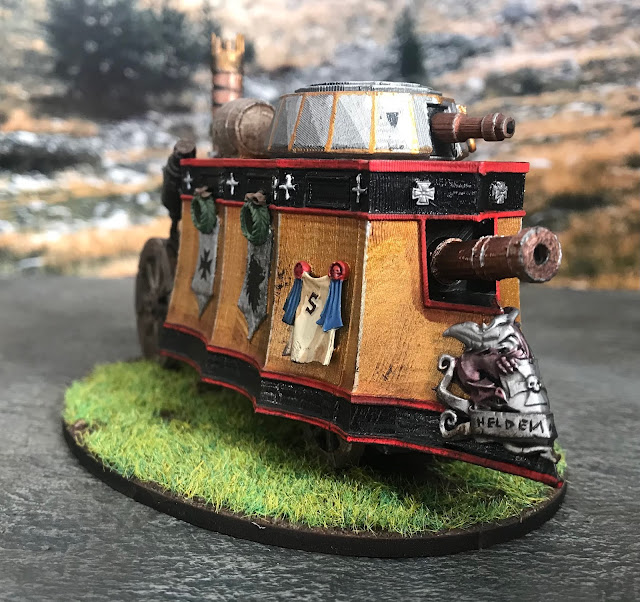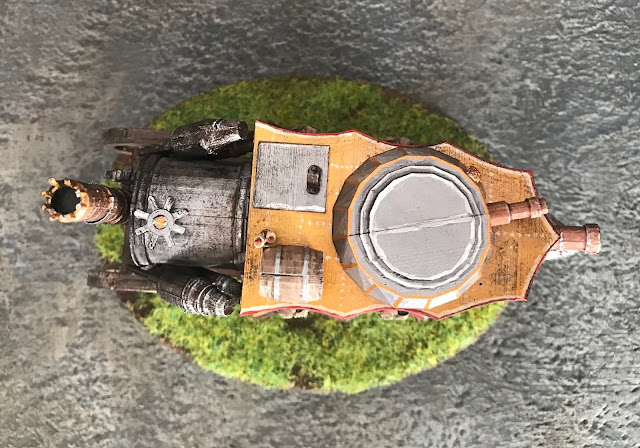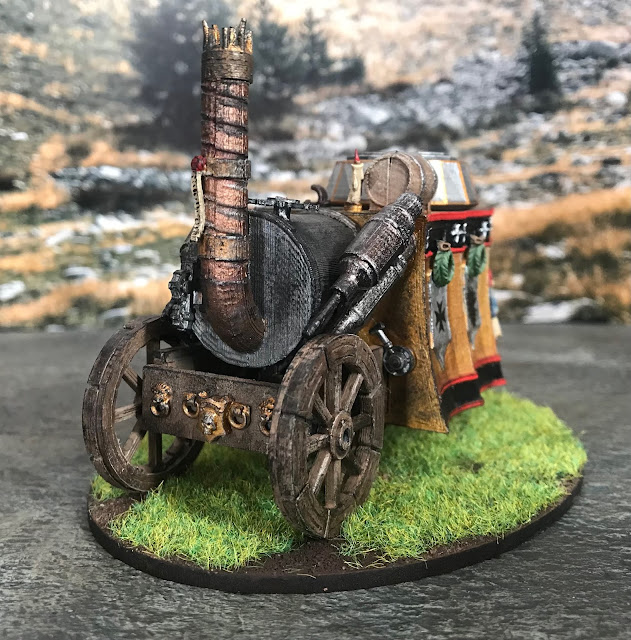Welcome to another review here on the Space Dinosaur, where I'll take a deep dive into a product, game, or technique and offer my opinions and recommendations. Today's topic is 3D printing miniatures in plastic. This was my first foray into printing a miniature and not terrain, and in my opinion, the results are, well, mixed.
Despite the brief interruption of the Iron Golems, the beginning of the year has been dominated by the Cities of Sigmar, as I push to get the Heldenmarch army to a "playable" 1000 point force. Will it be competitive? No, but at least there will be a variety of units to make it fun. As part of this push, I've painted some handgunners and cogsmiths, with more units on the way after this Steam Tank.
For those not in the know, 3D printing, at least the accessible hobby type, comes in two forms: resin and plastic. Resin printers work by using UV light to solidify layers of resin, while plastic printers, or Fused Deposition Modeler (FDM), work by heating plastic and extruding it into layers. Both types of printers create layers, but resin layers are much, much finer, rendering higher detail and smoother surfaces. Their limitation is the material is more expensive, and the build area is smaller, limiting it to miniatures, typically. Plastic printers can have a larger build area, but the layers are larger, and are immediately noticeable. It does mean that you can make some sizable items, however, making them more suitable for terrain.
I own a FDM printer, and I usually use it for terrain and it has served me well in that regard. Years ago, I tried printing a miniature, the Steam Tank, as I thought it sort of bridged the gap between miniature and terrain. Plus I didn't think the current Steam Tank model justified the $50 price. I can't find the original file anymore, but you can go onto Thingiverse and find some that are close. The print took a few hours, as I printed at a 0.1 mm layer height, the best my printer can do and is supposed to grant greater detail. For reference, terrain printing is usually done with 0.2 mm layer heights.
Once the model is printed, you have to do some clean up work, especially if any supports are involved. The PLA plastic I use doesn't sand very well, at least in my experience. If the print has some large gaps due to warping, which I had on one of the pistons, you can fill it in with Green Stuff. Once fully assembled, you're stuck with a model that from a distance looks good, but close up it's immediately obvious that it's been printed. There are techniques to mitigate this, which are on display in this post.
Before I even primed the model, I glued bits from actual GW kits onto the various surfaces to hide some of the most egregious lines as well as to provide some smoother areas to distract from the ridges. The higher detail of the GW bits also offsets the lack of detail that an FDM printer can provide and will make painting the model in an interesting way a lot easier. In my opinion, this did a lot to help the model along, especially at a distance.
When priming, you can spray more paint on then you usually would for a model, to let some of the paint fill in the ridges. You don't get a lot out of this, unless you lay the paint on real thick, but at that point you're just wasting paint. There are some brands of primer that have "filler" in them, and are marketed as helping to obscure print lines, but I haven't used any and so can't recommend it.
The next step is to adjust your painting style. Drybrush and washes have a tendency to emphasize the ridges, so you either don't use those styles at all or sparingly. When using a wash, pay extra attention to pooling along ridge lines. When drybrushing, try not to move the brush perpendicular to the ridge lines. Going parallel will mean you catch details more than the ridge lines. To get highlights you'll have to do a lot more edge highlighting and some of the details, like rivets, will just be painted on instead of being a part of the model.
Overall I don't think the result is too bad, but I definitely would just rather buy the model in the future. It takes some extra work just to make it look decent which I would rather spend on making a normal model look great. Plus you have to take into account buying the printer, and the amount of time that it takes to print the model at a decent level of detail. As a gaming piece it does it's job, and the one benefit of it being 3D printed, the top turret moves which is a neat little feature.
Now if I had a resin printer the result might be different, and perhaps I'll buy a resin printed model off of Etsy or somewhere to showcase the difference. I'll just stick to terrain from here on out with the FDM printer, where it actually saves me time as I don't have to scratch build entire structures.
-The Space Dinosaur










No comments:
Post a Comment